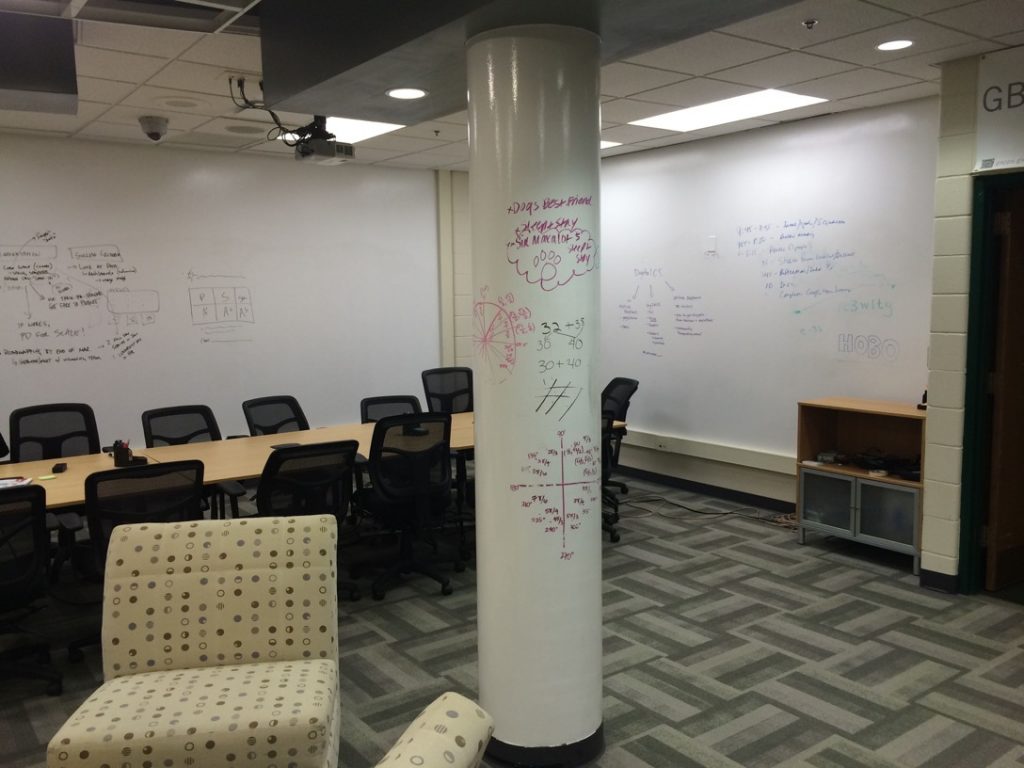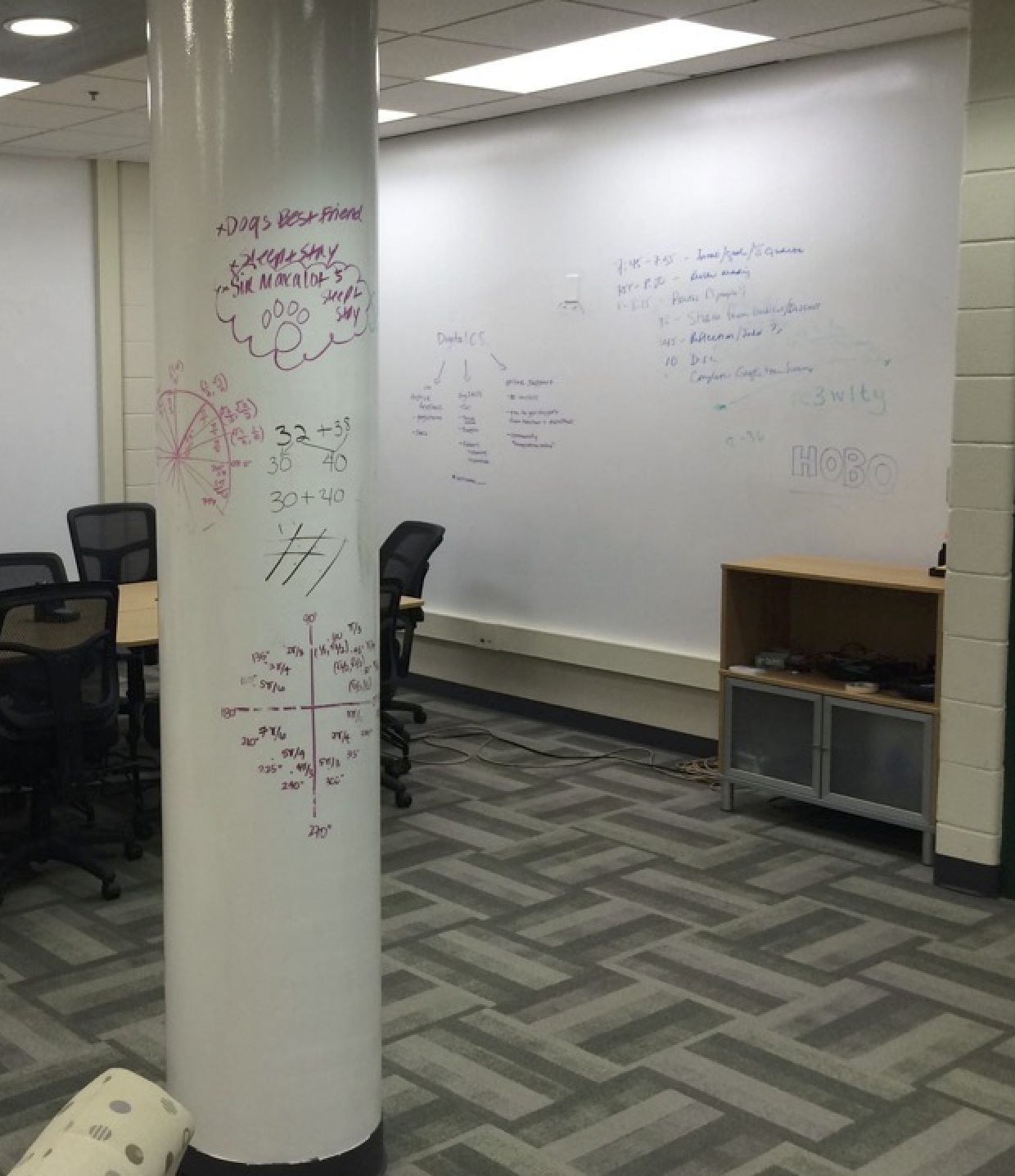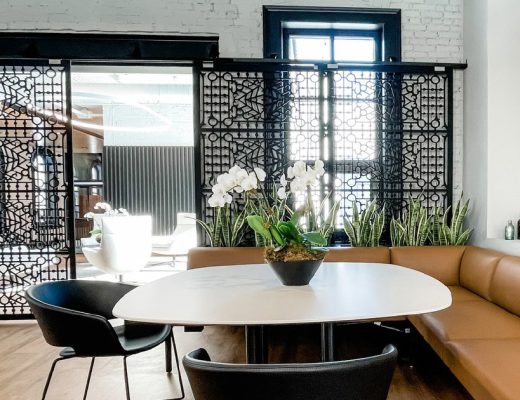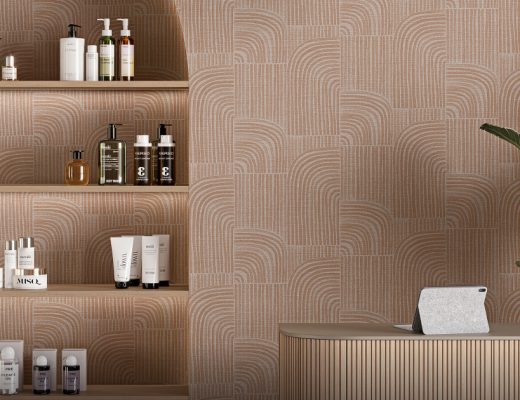Glenbrook North High School ranks among the top schools in Illinois and nationally, due largely to its focus on individual creativity. It’s an innovative school with access to all of the latest computers and classroom wizardry they need to create a dynamic learning environment. But the best technology they have, according to Chief Innovation Officer Ryan Bretag, is the dry erase paint that covers the walls.
“When ideas flow from floor to ceiling, the perceived boundaries disappear and the creative process really opens up,” Bretag explains. He recommended dry erase paint for Glenbrook after realizing that the best use of technology is a blended experience.
“It’s about combining pixels and pencils,” he says. “In watching some of our heavy users of technology, it became apparent they were always using physical tools, as well.” Sometimes, Bretag explains, students simply need to be able to scribble their ideas, hand to paper – or, in this case, hand to wall.
According to Associate Principal John Finan, Glenbrook encourages students to take charge of their own learning and enjoy going to school every day. It’s a philosophy that necessitates a different approach to design and décor.
“Students need to be active and moving around, and the old traditional classroom with desks bolted to the floor doesn’t work anymore,” Finan explains. In the summer of 2014, Glenbrook painted two walls with FUZE: one is an instructional technology hub for students and staff. The other is a former computer lab converted to a large classroom. In each space, they painted one wall top to bottom with FUZE.
“Students are constantly writing on the wall. They’re brainstorming, taking notes and solving problems, Finan says. Every student has a Google Chrome laptop and they use Google Apps to collaborate. As Bretag explains it, they move from the FUZE wall to Google, and from Google back to the FUZE wall.
“It’s a circular process where, at any moment, the creative juices start flowing. The wall is an idea generator. You walk in the room and say ‘hey, who added that thought to the concept?’ Anyone can add to it,” Bretag says. And when the wall fills up, someone snaps a photo and uploads it to the Google drive so everyone can access it.
“We use the wall to ideate through a problem. Then, when we’re done, we can thoughtfully start to work in the digital world, Bretag explains.

People have suggested painting partial walls to save money, and Bretag is quick to say no.
“Environmental psychology says when you create boundaries, you restrict idea flow. I’ve seen students who were too tall or too short to comfortably write on a whiteboard. All those issues go away when you have an entire wall,” Bretag says. He and Finan agree that schools should never eliminate the traditional elements of the classroom. Students still need to be able to write down their ideas.
“People say today’s kids are ‘so 21st century; they just want technology.’ But then you see the expression on their faces when you hand them a marker and ask them to go draw what they’re thinking. It’s intellectual graffiti. And if you’re a school that believes in inquiry-based learning, this is another tool in the toolbox.”








No Comments